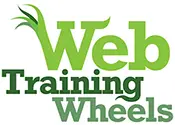How to create a member directory on your MemberPress site
MemberPress is one of my go-to plugins for easily protecting and charging for access to your content. I appreciate the fact that they stay focused on this core goal and don’t overload it with extraneous features. So it does not have a member directory feature built-in, but by using an additional free plugin you can add this capability.
In this use-case the requirements of the directory are simple: a front-end listing of site members, that other users can browse.
When people register for your MemberPress offerings, they are added to the existing user system within WordPress. That means that any plugin which taps into that to display WordPress users, should work fine with MemberPress. You don’t have to look for anything that is MemberPress-specific.
There are several fully featured and fairly complex directory plugins available on the WordPress repo, they are generally aimed at being all-in-one solutions for creating and monetizing the directory. They aren’t really designed to be used in conjunction with an existing membership site.
But there are fewer plugins that take a simpler approach, and even fewer that do a good job.
Read on for my recommendations.
Read more →





